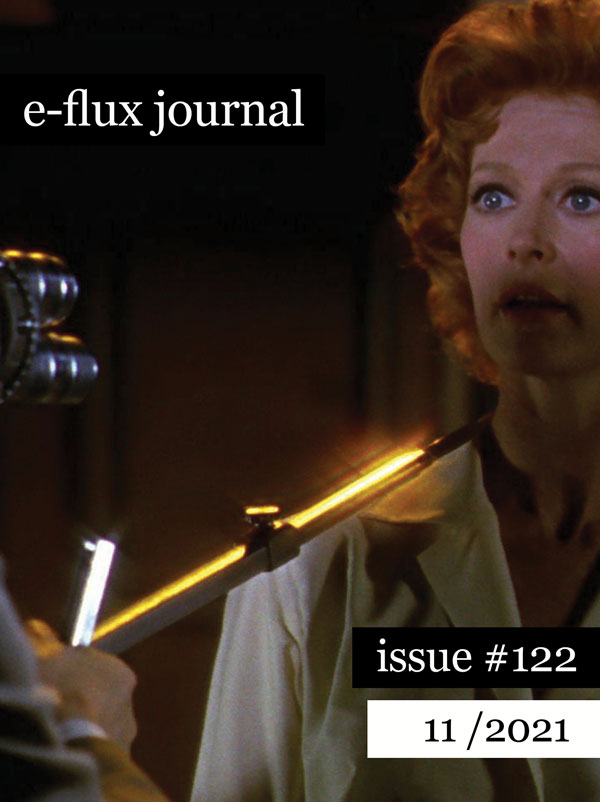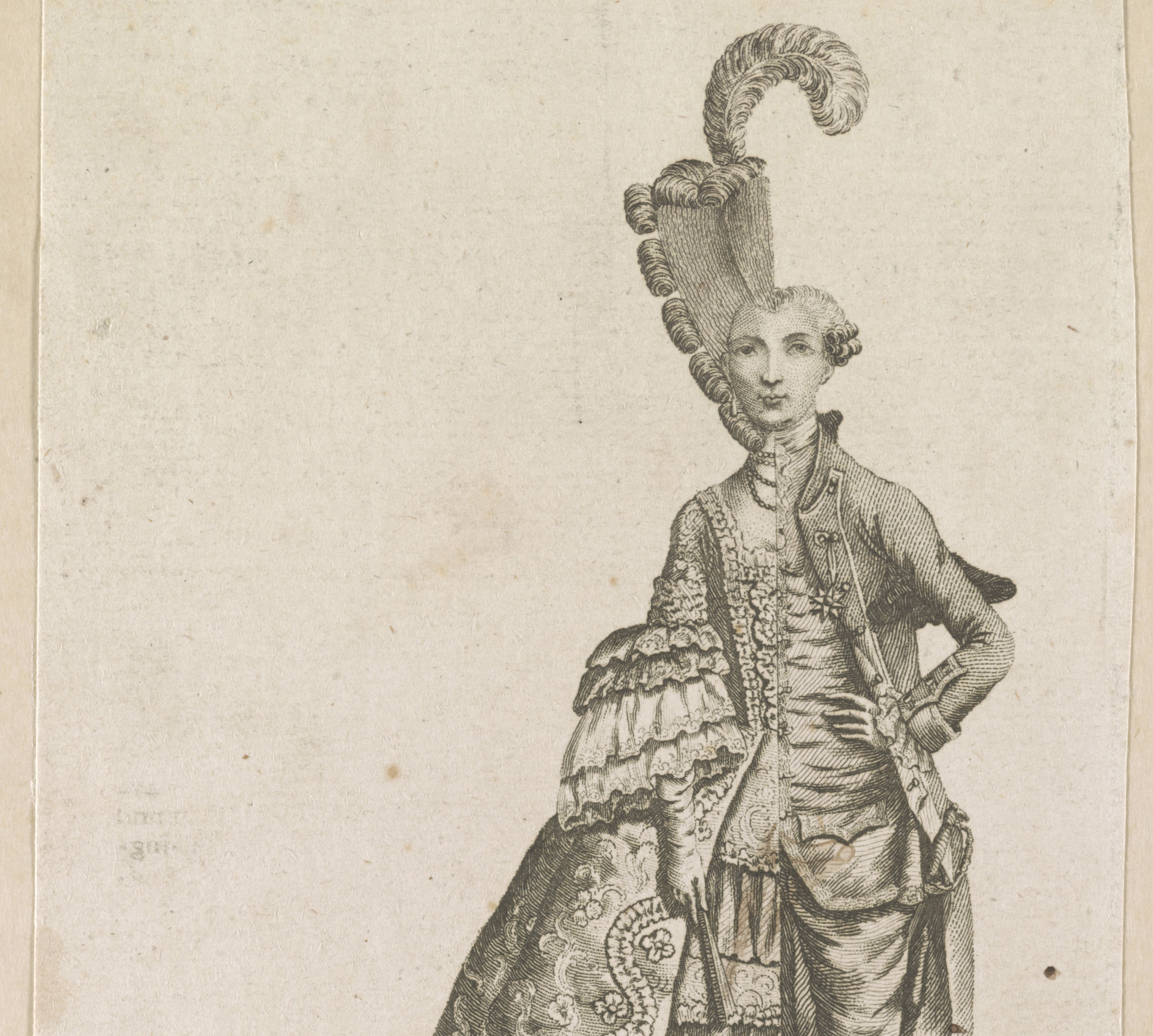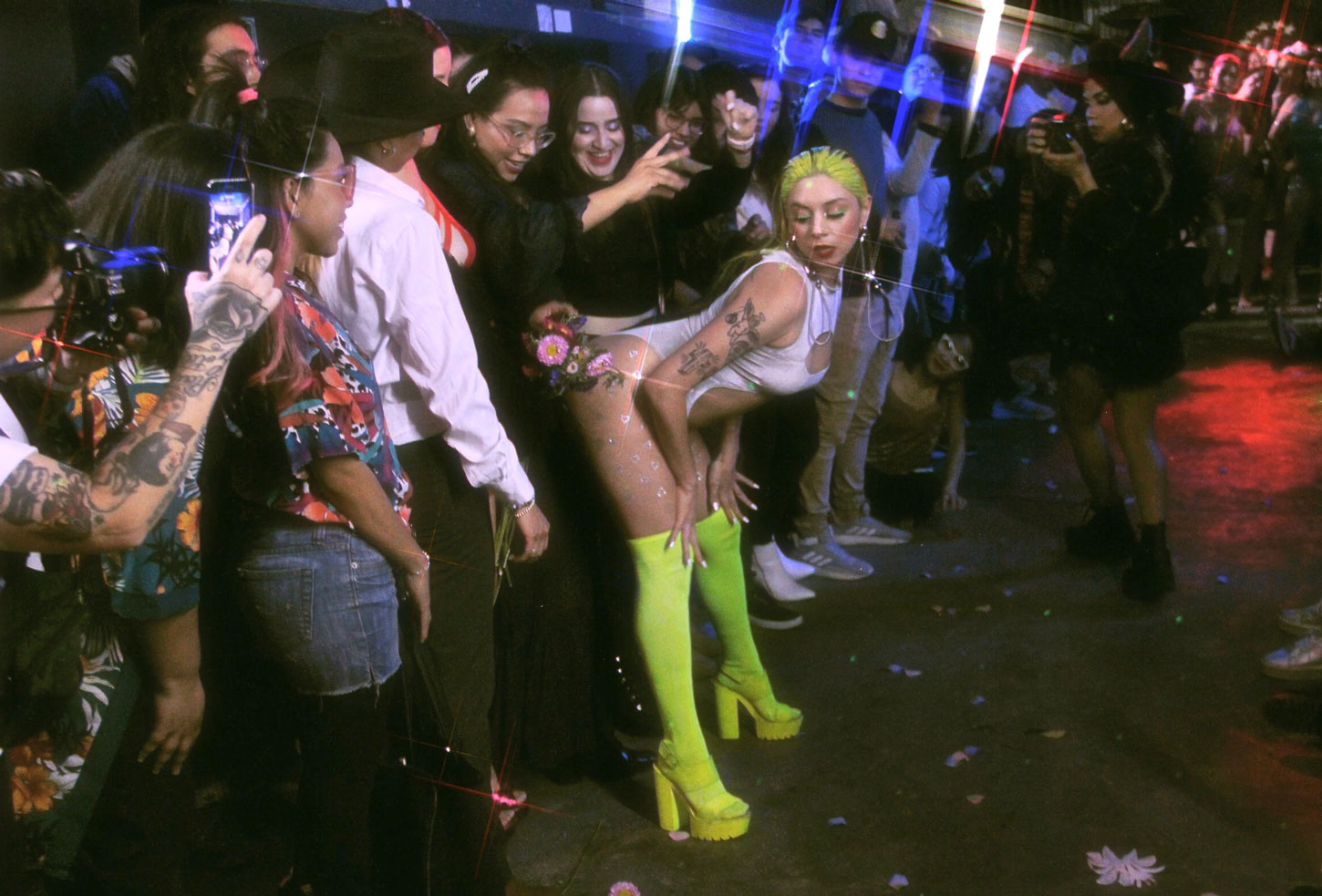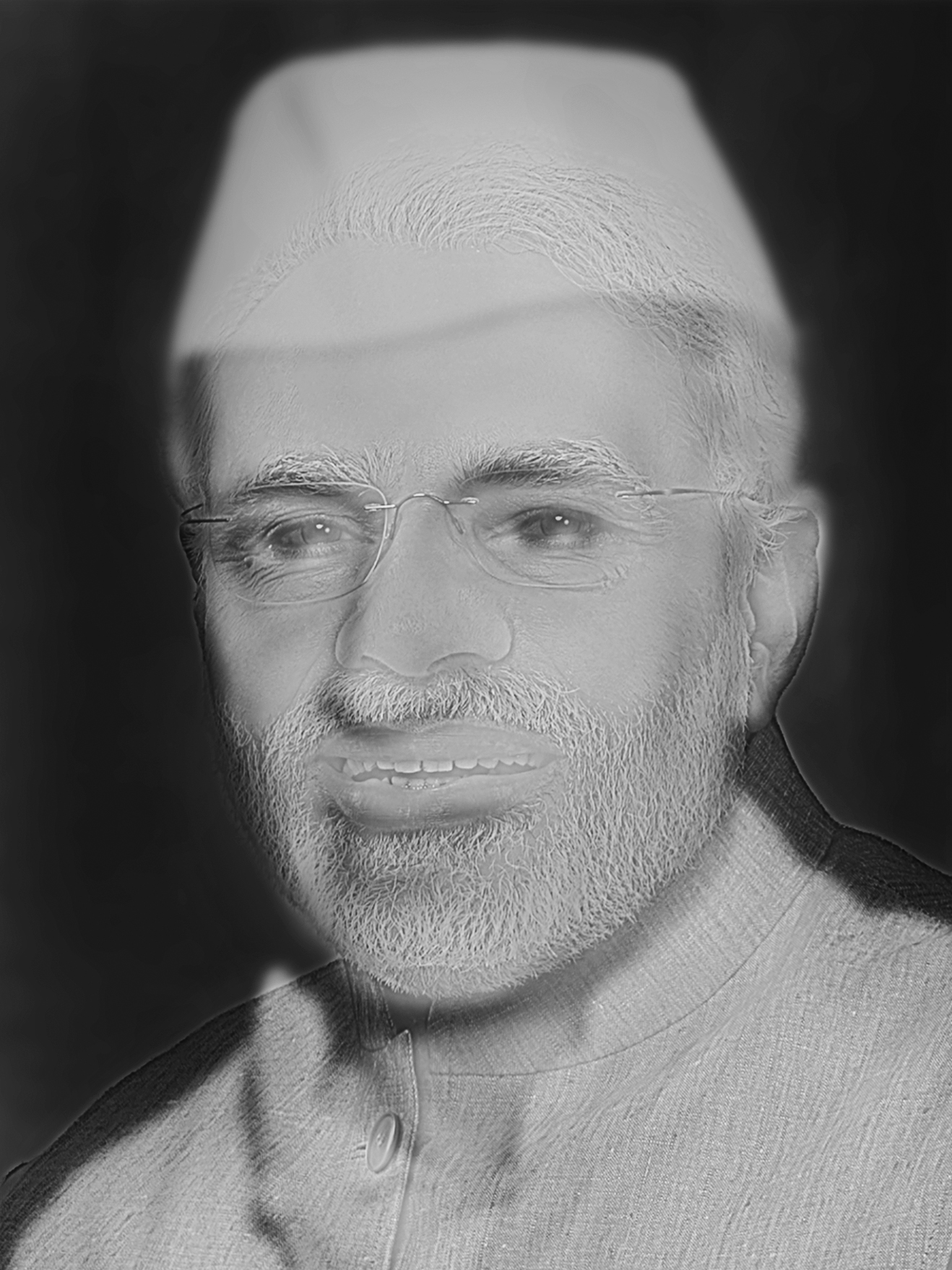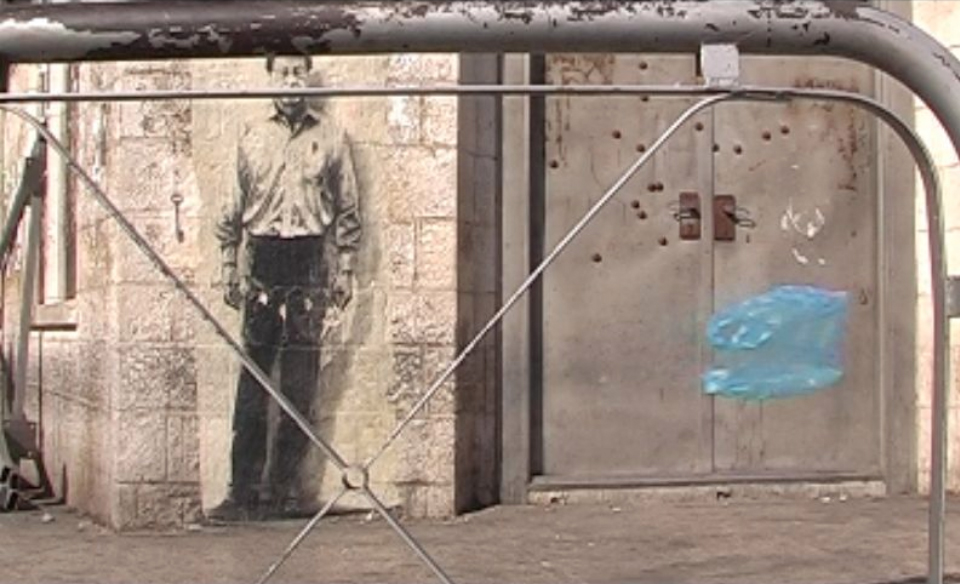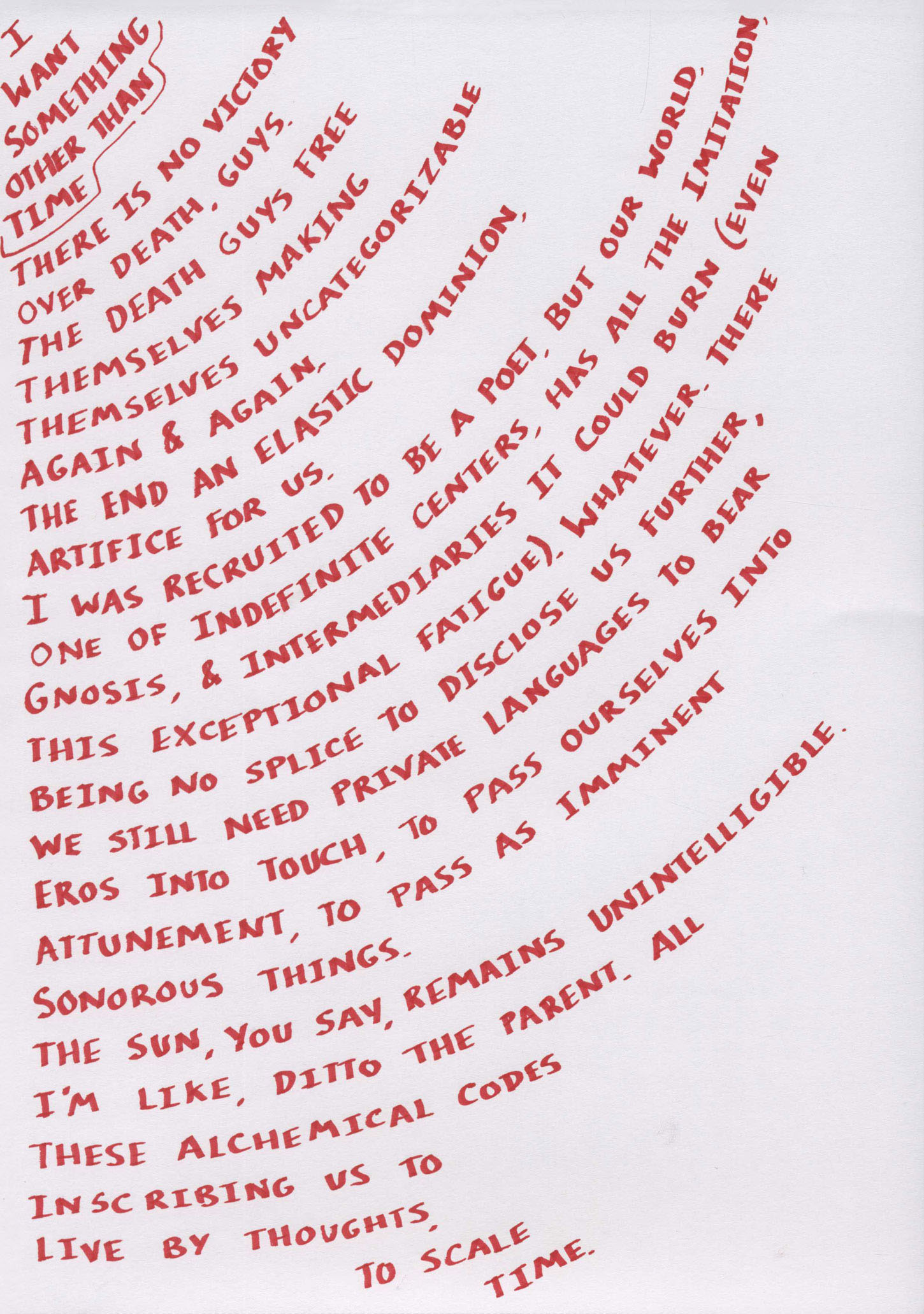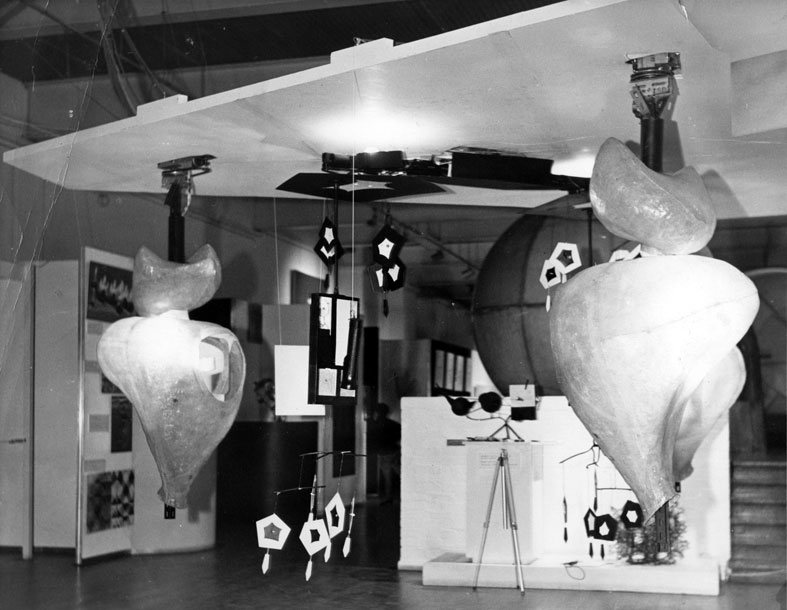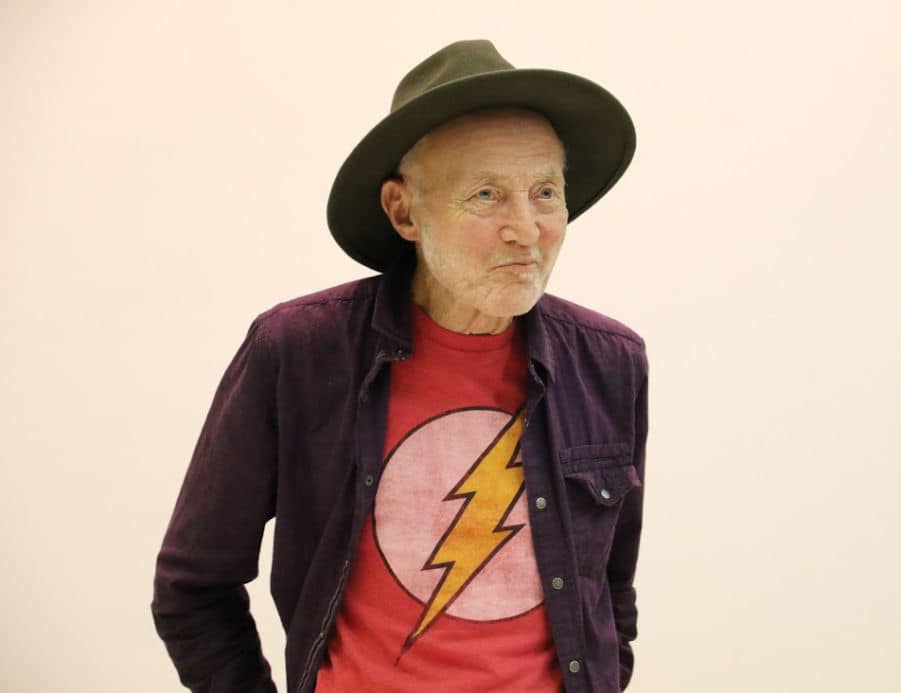“Seeing appearances as the shortcomings of a prior state of true being is indeed boring, I agree.” Warmed by the drinks, I’m warming to my theme. “Let’s work the surfaces, change the signs, fashion the possibility of a kind of being to come! We are not fallen imitations of cisters. We are prototypes of the bio-hacked beings to come! We add to the range of things that humans already edit about their bodies. We do it with the latest techniques, the latest information, in all fields. We are among the avant-garde of possible future humans. What if a world existed that could answer to the desires of our bodies?”
Two women sit at a sidewalk cafe in Manhattan. There are others around: suited bros poring over a spreadsheet, a possible fashion blogger, generally well-dressed white people. The women engage in dialogue and play a game. They talk Platonism, Nietzsche, femmunism, and also traps. The initial point of the game is to decide who has partaken in a particular sexual act, and who has given it or been taken by whom. As they speak, the women, in a dialogue written by McKenzie Wark, create a trans-for-trans space for communication, for a world both part of and separate from the cis one. As one woman tells the other, “They think they know our little secret, but we have information about being that they will never know.” As she says earlier, “We turn the cis gaze back on itself.”
Congregating at balls, gay clubs, or on the Hudson River waterfront, gangs of inner-city kids now aspired to the immortality of a photograph. They strike one pose after another, their bodies freezing for a fraction of second, as if the dance could stop time in its tracks. These kids know that to strike a pose is to pose a threat. With voguing, the Christopher Street Pier burst into history. Voguers reappropriated the camera’s voyeuristic gaze, deliberately making a spectacle of themselves: Click. Click. Click. Click. They learned to incorporate the mechanics of the camera’s eye and its imperative of self-display, if only to take control of the photographic apparatus and turn it on itself.
How do the images (and words) that we create go beyond the spaces in which they came into existence? How can stories cross over from their own bubbles to the other side of a highly polarized world? How can they live, sustain, and even contaminate opposing ideologies—like ink slowly dripping into a glass of water until it turns blue? After all, isn’t this exactly how propaganda has been diffused among the masses by various governments of the past, especially dictatorial ones—in little shifts and triggers and not in explosive events? The parameters of what was considered normal would be quietly stretched out, without us even realizing it. Today these shifts of normalization are seeded in viral images. I am convinced that the photographer today is out of touch with the complete image world.
In the same way that policymakers and scholars are preoccupied with the terms used to describe the cultural relationship between the West and its former colonies, Europe is obsessed with organizing the view for the sake of categorization and display of power—which concerns Europe’s self-imaging vis-à-vis itself rather than the Arab region’s interests. Al tamwyl al ajnabi (foreign funding) is essentially a blanket term used in public discourse to describe a relationship of power that shapes cultural representation, cultural exchange, and cultural diplomacy between two unequal sides. The discussion of what cultural diplomacy constitutes and how it plays a role in global cultural relations is essentially a discussion centered in the North American and European hallways of power.
There is no victory / over death, guys. / The death guys free / themselves making / themselves uncategorizable / again & again.
If modern Eurocentric history remains dominant in contemporary art discourse, what happens to the available theory and criticism of contemporary African art? At present, accounts of contemporary African art appear in a growing collection of critical, curatorial, and artist writing. How do these narratives, opinions, and polemics inform the critical review of African art practices? Further, in a pervasively Eurocentric setting, an atmosphere in which Western critics look at African art as illegitimate, how can a theory of South African art encourage an alternative reception of contemporary African art practices in general?
The collapse of reality is not an unintended consequence of advancements in, for instance, artificial intelligence: it was the long-term objective of many technologists, who sought to create machines capable of transforming human consciousness (like drugs do). Communication has become a site for the extraction of surplus value, and images operate as both commodities and dispositives for this extraction. Moreover, data mediates our cognition, that is to say, the way in which we exist and perceive the world and others. The image—and the unlimited communication promised by constant imagery—have ceased to have emancipatory potential. Images place a veil over a world in which the isolated living dead, thirsty for stimulation and dopamine, give and collect likes on social media. Platform users exist according to the Silicon Valley utopian ideal of life’s complete virtualization.
We’ll miss Sylvère because he was a friend. But we'll also miss him because now, more than ever, we need spiritual adventurers and cultural explorers like him.
